Ypsi Township on Bus, DDA TIF Settled
Ann Arbor city council meeting (Nov. 18, 2013): The first meeting of the post-election council stretched 6 hours and 45 minutes past its scheduled start time of 7 p.m. It was not until after 1 a.m. that the council considered an agreement to sell a city-owned property north of William Street between Fourth and Fifth avenues in downtown Ann Arbor – to hotelier Dennis Dahlmann for $5.25 million. The council deliberated for about 10 minutes on that issue before taking a unanimous vote to sell.

Swearing in of the councilmembers who won election on Nov. 5, 2013. From left: Mike Anglin (Ward 5), Jack Eaton (Ward 4), Sabra Briere (Ward 1), Jane Lumm (Ward 2) and Stephen Kunselman (Ward 3). Administering the oath was city clerk Jackie Beaudry. (Photos by the writer.)
Earlier in the evening, an hour-long chunk of the meeting was taken up by deliberations on the admission of Ypsilanti Township as a member of the Ann Arbor Area Transportation Authority. After an hour of discussion and questioning, the council voted unanimously to approve the addition of the township as a member of the AAATA. The council’s action brought the number of AAATA member jurisdictions to three: the city of Ann Arbor, the city of Ypsilanti, and Ypsilanti Township.
The council also deliberated for almost an hour before giving initial approval to a repeal of the city’s crosswalk law – so that vehicles would have the option of slowing (in addition to stopping) to yield to pedestrians. The repeal also eliminates the explicit need for motorists to yield to pedestrians who are standing at the curb – making motorists responsible for yielding only to those pedestrians who are “within a crosswalk.” The repeal passed on a 9-2 vote, but will need a second vote at a future meeting to be enacted. Back-channel discussion of some kind of compromise approach has unfolded since the meeting, but it’s not clear what, if any, impact that might have.
On an issue related to the crosswalk ordinance change, 40 minutes was spent on council discussion on a pedestrian safety task force – which had been postponed from its Nov. 7 meeting. Ultimately the council voted to establish a nine-person pedestrian safety task force with a charge of delivering a report with recommendations by February 2015. Applications from interested citizens should be turned in to the mayor’s office by Dec. 2, 2013, with the task force members to be appointed on Dec. 16. [.pdf of standard city board and commission task force application]
The council also spent about a half hour deliberating on final approval to a change to the ordinance that regulates the tax increment finance (TIF) capture of the Ann Arbor Downtown Development Authority. The change replaced the restriction in the ordinance originally enacted in 1982 with one that in the next few years will result in about $2 million in additional TIF revenue annually, compared to the amount the DDA would have received under strict enforcement of the 1982 language. Dissenting on that vote were Christopher Taylor (Ward 3) and Margie Teall (Ward 4).
Near the start of the meeting, Teall was selected as mayor pro tem, on a 6-5 vote. The council left its other organizational business – adoption of rules and assignment to committees – until Dec. 2.
The members of the rules committee will have a fresh assignment based on other action of the council on Nov. 18. The council passed a resolution that in part directs the rules committee to develop a set of standards for the conduct of councilmembers, based on “applicable statutes, regulations, existing city policies, and best practices such as Section and 2a of Public Act 196 of 1973 and the Ethics Handbook for Michigan Municipalities.”
Other business handled by the council included the final approval of a revision to the city’s ordinance on park use fees – to allow for a waiver for groups using a public park for the charitable distribution of goods to address basic human needs. Council chambers were filled with supporters of that resolution.
The council also formally adopted an update to the city’s non-motorized transportation plan, after having postponed the item on Nov. 7. And as a part of its consent agenda, the council approved various street closings associated with New Year’s festivities – The Puck Drops Here in downtown Ann Arbor and the National Hockey League’s Winter Classic at Michigan Stadium.
Former Y Lot Sale
Although it did not appear on the agenda until mid-afternoon on Nov. 18, the council had expected to see a sales agreement for the former Y lot presented for their consideration. The city-owned property is located north of William Street between Fourth and Fifth avenues in downtown Ann Arbor. The council had voted on Nov. 7 to direct the city administrator to negotiate with Dennis Dahlmann for the sale of the land and to present a sales agreement for approval on Nov. 18.

Former Y lot from the northwest corner of William and Fifth Avenue in downtown Ann Arbor, looking northwest. In the background, the new Blake Transit Center is under construction. The photo dates from mid-October 2013.
It was not clear until mid-afternoon on Nov. 18 that Powers would be able to comply with that Nov. 7 council directive. In emails to councilmembers spaced just 14 minutes apart, Powers first indicated that negotiations with Dahlmann were continuing and that he didn’t expect to have a sales agreement ready for that night’s meeting (3:41 p.m.) and then that Dahlmann had agreed to all the city’s terms (3:55 p.m.). City attorneys were preparing the sales agreement, Powers wrote in the later email, and he expected it to be ready for consideration at that evening’s meeting, which it was.
The Nov. 7 resolution had been added to the agenda on Friday, Nov. 1, 2013. Dahlmann offered $5.25 million for the property. It had been listed at $4.2 million. The city purchased the property from the YMCA for $3.5 million 10 years ago and has been making interest-only payments on the property for that time. A balloon payment is due at the end of this year. [.pdf of Dahlmann offer 10.17.13]
The sales price is important because the net proceeds of the sale are supposed to be deposited into the city’s affordable housing trust fund. A year ago at the council’s Oct. 15, 2012 meeting, the council adopted a resolution that indicated the proceeds of the sale would:
“… first be utilized to repay the various funds that expended resources on the property, including but not limited to due diligence, closing of the site and relocation and support of its previous tenants, after which any remaining proceeds be allocated and distributed to the Affordable Housing Trust Fund …
The original Nov. 7 resolution included direction to ensure eventual development of the site. But during the Nov. 7 deliberations, Christopher Taylor (Ward 3) put forward amendments that were far more detailed about how protection against non-development was to be achieved. Those amendments were adopted by the council as part of the direction to the administrator. [.pdf of Taylor's amendments.]
Taylor’s amendments included a minimum 400% floor area ratio (FAR), with mixed use on the bottom floor, office space on the mid-floors and residential on the top floors. The deadline for building something is January 2018. There’s a prohibition against selling to another third party except that the city has a right of first refusal. The amendments also gave direction on requirements for energy efficiency and a required conversation with the Ann Arbor Area Transportation Authority, which operates the Blake Transit Center next door to the parcel.
If negotiations with Dahlmann had not been successful, then the Nov. 7 resolution directed the city administrator to negotiate with CA Ventures (Clark Street Holdings). CA Ventures had increased its offer to $5.35 million – but that increased amount was received after the deadline for offers, which was firm and clearly communicated to bidders, according to the city’s broker.
The city received five bids on the property by the Oct. 18 deadline. The city had hired Colliers International and local broker Jim Chaconas to handle the possible sale. [.pdf of summary page by Chaconas]
Former Y Lot Sale: Council Deliberations
City administrator Steve Powers led off by saying that thanks to the work of Colliers and the city attorney’s office, there’s a sales agreement for consideration. The rider reflects the Nov. 7 council resolution, he explained.
Chuck Warpehoski (Ward 5) said he disliked the idea of Dahlmann’s downtown hotel monopoly. [Dahlmann's holdings include the Campus Inn and Bell Tower hotels.] However, Warpehoski felt like the council should let the “best bid win.” He also looked forward to the benefit to the city’s affordable housing trust fund. [By council resolution, the net proceeds of the sale are to go to the city's affordable housing trust fund.]
Sally Petersen (Ward 2) said she thought that the parcel is too small for a hotel anyway, noting there are other city-owned parcels where a hotel could be built. Mayor John Hieftje reiterated the idea that there are several other sites where a hotel could be built, including private property that’s owned by developers.
Stephen Kunselman (Ward 3) stated: “I am so happy this is before us.” He recalled serving on the planning commission in 2004 when that body had approved a plan for a hotel on the site, which didn’t get built. “I’m not in the business of picking winners and losers in the marketplace,” Kunselman said. It’s 10 years of history, he said. He missed the Y building – as he remembered taking swim lessons there. He called Dahlmann a well-respected businessman in the community.
Christopher Taylor (Ward 3) said he’d support the sale. He’d queried his constituents and on that basis he’d come to the conclusion that he’d support it. The Key Bank building was given as an example of the kind of quality of work that Dahlmann did. Taylor said he’s looking forward to getting this property back on the tax rolls.
Jane Lumm (Ward 2) called Dahlmann’s proposal “head and shoulders” above the other proposals. Lumm thanked Kunselman for kicking off the effort. Lumm recalled serving in 1993 on something called the Ann Arbor Inn task force. She echoed Kunselman’s remarks about not picking winners and losers. It’s an exciting proposal, she said. It’s going to be a “shining development” for downtown, she said. Lumm contended that Dahlmann’s proposal was the only one that proposed to involve the community with the development.
Outcome: The council voted unanimously to sell the former Y lot to Dennis Dahlmann for $5.25 million.
Former Y Lot Sale: Coda
During council communications at the end of the meeting, Christopher Taylor (Ward 3) said that the council had that evening approved a sales agreement with someone [Dahlmann] who’d contributed money to several council campaigns. He said there’s nothing wrong with that, but it was the same kind of situation that some councilmembers – who’d received money from Dahlmann – had criticized at previous meetings with respect to membership on a city board.
During public commentary at the conclusion of the meeting, Ed Vielmetti expressed concern about the fact that the land sale was put on the agenda at the last possible minute. At 5:11 p.m. the relevant documents were not available, he said. So the public was not invited to be a part of the process. He didn’t have an opportunity to see the documents before the council voted, let alone prepare comments to share during public commentary. He then called the council’s attention to some very old minutes from various boards and commissions that were only just now for that night’s meeting attached to the city council’s agenda.
Ypsilanti Township Membership in AAATA
The city council considered for a second time a revision to the articles of incorporation of the Ann Arbor Area Transportation Authority to admit Ypsilanti Township as a member and to increase the board membership from 9 to 10 members so that the township can appoint a member. The council had postponed the action at its Oct. 21, 2013 meeting. The vote to postpone was 8-3 with dissent from mayor John Hieftje, Christopher Taylor (Ward 3) and Margie Teall (Ward 4).
At its Sept. 26, 2013 meeting, the AAATA board already approved the membership of Ypsilanti Township. That action was contingent on approval by the Ann Arbor city council.
An earlier expansion in membership was given final approval by the AAATA board at its June 20, 2013 meeting. That’s when the city of Ypsilanti was admitted as a member of the AAATA and its board was increased from seven to nine members, one of whom is appointed by the city of Ypsilanti. The name of the authority was also changed at that time to add the word “area” – making it the Ann Arbor Area Transportation Authority. [Amendment 3 of the AAATA articles of incorporation]
The expansion of the AAATA’s geographic footprint to include some jurisdictions geographically close to the city of Ann Arbor – and with whom the AAATA has historically had purchase-of-service agreements (POSAs) – sets the stage for a possible request of voters in the expanded geographic area to approve additional transportation funding to pay for increased service frequencies and times.
The AAATA could place a millage request on the ballot in May 2014, probably at the level of 0.7 mills, to support a 5-year service improvement plan that the AAATA has developed. A schedule of 13 public meetings to introduce that plan ended on Nov. 14. The series of meetings began on Oct. 17 before the council’s Oct. 21 decision to postpone. [For more background, see "Council Agenda: Transportation Governance"]
The current, more localized expansion of the AAATA contrasts with a now demised effort in 2012 to incorporate all of Washtenaw County into a single countywide transportation authority. When the Ann Arbor city council withdrew Ann Arbor’s participation in that effort, at its Nov. 8, 2012 meeting, it gave encouraged the AAATA “to continue to discuss regional transportation options among Ann Arbor, Ypsilanti, Ypsilanti Township, Ann Arbor Township, Pittsfield Township, and Scio Township, leading to a better understanding and process for improving local transit options…”
Over the course of the last year, the AAATA held a series of meetings with officials from those municipalities, a group that came to be called the “urban core” communities.
One outcome of those conversations was an interest in membership in the AAATA on the part of the two Ypsilanti jurisdictions. The city of Ann Arbor (pop. ~116,000), the city of Ypsilanti (pop. ~19,500) and Ypsilanti Township (~53,000) make up a bit more than half the population of Washtenaw County (pop. ~351,000).
Ypsi Twp. in AAATA: Public Commentary
Jim Mogensen spoke in favor of expanded transit in the urban area. He called it the continuation of a process that began over 40 years ago.
He recounted the history of changes that allowed the expansion to happen. In the mid-1970s after the city of Ann Arbor passed its millage, the AATA was expanded in a way that allowed the municipalities on the eastern side of the county to be included – through POSAs (purchase of service agreements).
What those communities pay, he said, is the local match for federal funds. Ann Arbor Township is the only community that’s no longer a part of that expansion, he said. Now, the AAATA has come up with a good plan to enhance service on the east side of the county, Mogensen said.
Ypsi Twp. in AAATA: Council Deliberations
After the consent agenda was approved, around 9 p.m., the council adjusted its agenda to accommodate the schedule of Ypsilanti Township officials. Township clerk Karen Lovejoy Roe had arrived at the meeting and had a constrained schedule.
Stephen Kunselman (Ward 3) led off deliberations by saying he’d attended some of the AAATA meetings that were held over the last month and he did not hear anyone say they were opposed to Ypsilanti Township joining the authority. He urged the council to vote unanimously to support Ypsilanti Township as a member.
Jack Eaton (Ward 4) said he strongly supported expanding transportation in the urban core. But he contended that the plan to ask for a millage would result in an inequitable funding arrangement. He ticked through the amount of millage each community would pay. He wanted a uniform total millage across all communities.
Margie Teall (Ward 4) responded to Eaton by saying that the amount of service in Ann Arbor is much higher, and that it’s natural that the amount contributed by Ann Arbor would be greater.
Teall asked Michael Ford, the AAATA’s CEO, to the podium. Ford said that 84% of the AAATA’s service is provided in Ann Arbor. He stressed that the question before the council that evening was membership in the AAATA.
Jane Lumm (Ward 2) wanted to know what would happen if a millage didn’t pass: Would Ypsilanti Township convert their general fund allocation to a transit millage? Ford said he wouldn’t speak for the township. Karen Lovejoy Roe took the podium to respond to Lumm’s question. She thanked the council for moving up the item on the agenda. She said that Ypsilanti Township has had some sort of POSA for several years, and as a member of the AAATA, the township would be willing to make a longer-term commitment. [.pdf of draft MOU] She was excited about having transit that connects the west and east sides of the county.
Lumm asked if Ypsilanti Township would convert the general fund funding to a millage, if an AAATA millage didn’t pass. Lovejoy Roe said that right now, the township would lock in the current POSA agreement in perpetuity – but that wouldn’t necessarily result in the township itself asking for a millage of its residents.
Lumm said it’s not been clarified what the standards are for being admitted as a member of the AAATA. Lovejoy Roe asked what difference it would make, if the township board is entering into a legally binding agreement to pay the cash.
Lumm asked Ford what the standards are for admitting a municipality as a member. Ford referred to the council’s resolution for exploring conversations with the urban core communities, a community’s ability to pay, where population density is, and other factors.
Lumm reported that she attended one of the public outreach meetings, and there were questions asked about routes in Ward 2. She contended that it’s not clear whether the AAATA’s series of outreach meetings had been a “sales tour” or a “listening tour.” In the “marketing materials,” she said, there was an indication that the improvements will require a 0.7 mill tax. Ford stressed that the AAATA board has not made a decision to place a millage on the ballot. The point of the meetings was to hear input and make adjustments and refine the plan, he said. “We are listening to people. … That’s what we do!” he added. Lumm complained there is not enough service improvement in Ward 2.
Sumi Kailasapathy (Ward 1) thanked Ford for providing the MOU between AAATA and Ypsilanti Township. She contended the goal of long-term planning is undercut by the monthly invoicing to which the MOU refers. Ford described that as just an operational issue – and stressed that it’s in draft form. The MOU simply operationalizes the exchange of money, he said. Kailasapathy asked if the planning would take place on an annual basis. Ford indicated that planning is a continuous process, quarterly and annual. Planning is in the AAATA’s DNA, Ford said – “that’s what we do.”
Christopher Taylor (Ward 3) said that for him, it’s a simple question of whether it’s good for Ypsi Township to be a member. Leaving aside the “soul-sucking micromanagement” of the AAATA – an allusion to the line of questioning pursued by Lumm – Taylor said the answer to the question is yes. Taylor characterized Eaton’s worry about the amount of support there would be for a millage as a fair point. But Taylor said that this idea will be put into the marketplace (of voters). It’s natural that Ann Arbor will receive most of the service, he said, as it’s the economic engine of the region.
Sally Petersen (Ward 2) recalled a remark from township supervisor Brenda Stumbo at the council’s Nov. 7 meeting – that you can’t get from the city of Ypsilanti to the city of Ann Arbor without going through Ypsilanti Township. If the buses will go through the township anyway, it makes sense that the township has a voice on the board, Petersen said. She was less concerned about the funding, saying she gave Ypsi Township the benefit of any doubt that they’ll continue to pay the POSA.
Chuck Warpehoski (Ward 5) asked Ford to review the city of Ann Arbor’s increase in service over the five-year period. Ford explained that over the five-year period, service would increase 33%. Warpehoski concluded that’s about commensurate with the percentage that an additional 0.7 mill tax would mean. [Ann Arbor taxpayers currently pay a bit more than 2 mills in transit tax.] Warpehoski invited Lovejoy Roe to confirm that Ypsilanti Township would not have the demand for the same level of service as Ann Arbor – which is to have a bus stop within 1/4 mile of every household. She confirmed that such demand in Ypsilanti Township doesn’t exist at this point.
Warpehoski concluded that it wouldn’t make sense to define equity by having every jurisdiction levy equal total millages and let the variance follow from differences in property values. [The levy that AAATA would impose, upon voter approval, would be uniform. But taxpayers in the two cities of Ann Arbor and Ypsilanti would be paying their own millages in addition to the AAATA millage.] He confirmed with Ford that the costs per service hour charged for POSAs include all the overhead costs.
Sabra Briere (Ward 1) asked why Pittsfield Township isn’t joining the AAATA as a member. Ford explained that Pittsfield is leaning toward a longer-term POSA, so that they wouldn’t participate in an AAATA millage. He didn’t want to speak for Pittsfield. Briere said Ypsilanti Township has been asked to take a leap of faith. And the township is making a significant financial commitment, she said. Briere related some vignettes from her own experience. She wrapped up by saying she hoped that the council would support the resolution.
Mike Anglin (Ward 5) recalled the council’s December 2012 direction to the AAATA after the demise of its countywide effort. The council had decided it wanted to focus not across the county but more locally, and that’s what the AAATA had done, he said. So he was going to support the resolution.
Eaton asked Ford if there is a standard for adding members to the AAATA. Ford responded by saying the council in part defined that for the AAATA with its urban core resolution from late 2012. There are other factors – geographical considerations, where people live, where trips are generated, as well as willingness to pay. Back and forth ensued between Eaton and Ford about standards for admission into the AAATA. Eaton wanted to know: If Ypsilanti Township were willing to pay for improvements without an AAATA millage, would the AAATA provide additional service. Eaton pointed out that a neighborhood in Ann Arbor can’t choose a reduced level of service. Ford finally said to Eaton: “What is your question?” Part of Eaton’s point was that the financial burden is not equal across neighborhoods within the city: In some parts of the city, there is less transportation service.
Lovejoy Roe said that this approach would lock in at least the current level of service for Ypsilanti Township. She pointed out that Ypsilanti Township will have only one vote on the AAATA board.
Lumm returned to the idea of criteria for admission into the AAATA. She didn’t think there was a rigorous enough standard for admission. Lumm called Ford to the podium again. She noted that the riders-per-service-hour goal of the AAATA is 25 passengers, but complained that the commuter express service has less than that. Ford responded by saying that the commuter express service no longer uses any local Ann Arbor millage dollars.
Briere asked if there are any buses that are completely internal to Ypsilanti Township. No, answered Ford. She asked if there are any routes specific to some ward. No, said Ford.
Petersen stressed that there’s an economic value that’s generated by a worker from Ypsilanti riding the bus to Ann Arbor.
Lumm appeared to want to speak on the question but Hieftje advised that Lumm was considered to have spoken twice, having interspersed her questions of Ford with her own commentary.
Stephen Kunselman (Ward 3) argued against “intellectualizing” the issue and said he wanted a unanimous vote. He stressed that Ypsilanti Township would have just one vote on the AAATA board. He’d been a vocal opponent of the countywide transit effort out of concern that that proposal would have yielded majority control. [Ann Arbor would have had 7 of 15 board seats under that countywide proposal.] As far as the standards for admission, the standard is clear, said Kunselman: Ypsilanti Township is the second largest community in the county and this is about “mass transit.”
Kunselman wanted a clear majority vote by the council to send a clear message of support. Hieftje followed up with standard arguments in favor of public transportation. Hieftje said if there’s a millage on the ballot put forward by the AAATA, then he’ll support it. For now, he hoped for a unanimous vote on welcoming a new member into the AAATA.
Outcome: The council voted unanimously to approve the amended articles of incorporation so that Ypsilanti Township is now a member of the AAATA. The vote drew applause.
Crosswalk Ordinance
The council considered the repeal of language in the city crosswalk ordinance.
The city’s ordinance differs from the state’s Uniform Traffic Code (UTC) in two respects: (1) requiring motorists to stop for pedestrians, not just to slow as to yield; and (2) requiring motorists explicitly to take action to accommodate pedestrians standing at the curb at a crosswalk, not just those pedestrians who have already entered the crosswalk.
The proposal the council was asked to consider would change the law so that slowing (not necessarily stopping) would be a legal way to yield to pedestrians within crosswalks. The ordinance would be further changed so that only pedestrians within crosswalks (not those standing at the curb) would need to be accommodated by motorists.
Crosswalk Ordinance: Public Commentary
Kathy Griswold stated that she’s previously spoken in favor of a state crosswalk law. She asked four questions: (1) How were Washtenaw Bicycling and Walking Coalition members “hoodwinked” into supporting an ordinance change instead of supporting pedestrian infrastructure? (2) Why is lighting inadequate in many neighborhoods, especially at crosswalks? (3) Why are councilmembers supporting a pedestrian safety task force to report back in February 2015? She said it’s a duplication of the efforts of the transportation safety committee; and (4) Why do we continue to ignore overgrown vegetation at intersections?
Erica Briggs addressed the council as chair of the Washtenaw Bicycling and Walking Coalition. She supported the city’s current version of the ordinance. She said she was delivering a petition signed by 587 people supporting the current ordinance. She was also delivering a letter signed by several organizations supporting the current ordinance. She called the current ordinance a recognized best practice. She cited Traverse City as an example of a community where the Uniform Traffic Code is enforced so that motorists are supposed to stop for pedestrians who are standing at the curb.
Chris Hewett spoke for the neighborhood group Safety on Seventh. Whatever side of the vote councilmembers are on for the crosswalk ordinance, he said, it’s important to focus on the safety of pedestrians. He challenged councilmembers to leave their cars at home and see what it’s like to experience the city as a pedestrian. He challenged the council to make people and neighborhoods their highest priority, not traffic flow and vehicle speeds.
Crosswalk Ordinance: Council Deliberations
Sabra Briere (Ward 1) led off deliberations by venturing that there was a time of the council’s history when there were no questions at first readings of ordinance changes. That time has passed, she said. She wanted to know if traffic engineers participate in approving ordinance language.
City administrator Steve Powers said no, that’s the council’s job. Traffic engineers provide input into the language, but an ordinance doesn’t require traffic engineer approval, Powers explained. Public services area administrator Craig Hupy confirmed for Briere that a traffic engineer would evaluate how the policy choices would be applied. Hupy said that if the ordinance were repealed, signage would have to be changed from “stop” to “yield.” And the cost of that would be $14,000, Hupy estimated.
Briere asked for data on accidents before the council’s previous ordinance change and after that change. Hupy indicated that some of the data can be shown by hour of the day.
Sally Petersen (Ward 2) shared that the crosswalk ordinance has been a very emotional topic for her. She and Sumi Kailasapathy (Ward 1) had met with representatives of the Washtenaw Bicycling and Walking Coalition to learn about the impetus for the previous change back in 2010 and 2011. Petersen contended that the approach of “increasing pedestrian rights” just hasn’t worked. From 2009 to 2012, pedestrian crashes rose 42%, she said. For a five-year period prior to that, there was a decrease. She contended that while you can’t say the change to the ordinance caused the increase, you could say that safety did not increase.
It’s too dangerous to tell pedestrians that “they rule,” Petersen said.
Kailasapathy stated that in addition to repealing the ordinance, more action is needed. Infrastructure improvements are also important, including more HAWK lights, she said. The focus should be on safety, not on rights, she said.
Jane Lumm (Ward 2) reported that she, Petersen and Kailasapathy had begun working with city staff several weeks ago on the issue. She thanked the staff for their work. Lumm contended that Ann Arbor’s ordinance is unique and this change would make Ann Arbor’s local law conform with the UTC. She contended that the local ordinance is not consistent with local signage. She contended that “pedestrians rule” is a mindset that is dangerous.
Chuck Warpehoski (Ward 5) asked Hupy about the RFB (rapid flashing beacon) and HAWK (high-intensity activated crosswalk beacon) implementations and why a regular stoplight isn’t simply installed. Hupy explained that a traffic signal has to meet a “warrant” – a standard that would allow it to be installed. He couldn’t say that the mid-block locations would or wouldn’t meet that standard.
Warpehoski asked Ann Arbor police chief John Seto if he thought that changing the ordinance will affect pedestrian safety in Ann Arbor. Seto replied that he couldn’t say. Warpehoski gave examples of enforcement techniques used in Florida, using plainclothes policemen, cone placement, etc. He asked Seto if that type of enforcement action would be possible, if the ordinance were changed. Seto said enforcement would be challenging, because the pedestrian would need to be in the roadway. Warpehoski explained the technique for enforcement was in fact to have the pedestrian step into the roadway. It could be done, Seto said, setting aside staffing constraints.
Warpehoski got clarification that under the UTC if there’s enough time for a motorist to stop, then it’s legal for a pedestrian to step into the roadway. Assistant city attorney Bob West confirmed Warpehoski’s understanding. Warpehoski wanted to know what the responsibility is for motorists in multi-lane situations. West explained that vehicles traveling in the same direction of travel have the same responsibility.
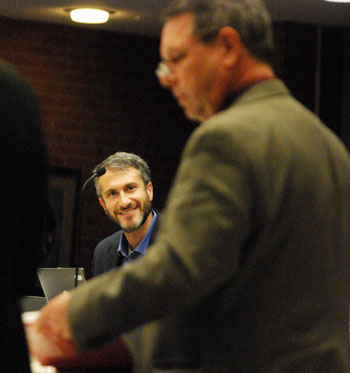
Assistant city attorney Bob West was at the podium to answer questions about the UTC. He had brought a copy of the UTC with him, but he did not read it aloud. In the background is Christopher Taylor (Ward 3).
West said the intent of the law is not to make pedestrians say, “I can make these guys stop.” Pedestrians have more to lose, West noted.
Warpehoski asked Seto and West how confident they’d been in making citations and making them stick. They indicated they were comfortable with making citations stick.
Stephen Kunselman (Ward 3) picked up on Lumm’s contention that Ann Arbor’s ordinance is unique. He himself had asked for other examples. He noted that pedestrian advocates in Ann Arbor contended that Traverse City interprets the UTC to mean that “within a crosswalk” includes the curb. But Kunselman contended that the vehicle code defines the crosswalk as measured between the curbs. Kunselman said that by having different language from other cities, it’s causing confusion. How could Traverse City possibly be giving the UTC the claimed interpretation? asked Kunselman.
Seto didn’t know. Seto told Kunselman that the Traverse City police chief’s response to his question was to provide the ordinance language. Kunselman wanted to know if the UTC can be enforced as meaning “at the curb” – the same intent that’s explicit in the existing ordinance. West didn’t think so.
Mayor John Hieftje encouraged councilmembers to wrap up this item by pointing out that there were a lot of items left on the agenda and this was just the first reading.
Mike Anglin (Ward 5) invited councilmembers to ask themselves how often they’ve come close to hitting a pedestrian.
Christopher Taylor (Ward 3) noted the asymmetry between the claim that the ordinance is so powerful that it causes pedestrians to step in front of cars, yet it’s not powerful enough to compel a motorist to do what they should do in any case: Yield to pedestrians at a curb at a crosswalk. Taylor also noted the increases in pedestrian accidents in other cities, which had nothing to do with Ann Arbor’s ordinance.
Hieftje echoed Taylor’s sentiments, and said he also wouldn’t support the repeal of the ordinance, even on first reading.
Lumm read aloud a message she’d received from a resident who complained that they have had to slam on their brakes for pedestrians who were crossing against the light. [The ordinance in question actually applies to non-signalized crosswalks.]
Kunselman said it’s more important to install HAWK and RFBs than to focus on ordinance language. He also wanted to add FTEs (full-time equivalent positions) to the police department so there can be more traffic enforcement. AAPD staffing levels are dramatically down and can’t enforce basic traffic law, he contended. He questioned why the law should be different in Ann Arbor.
Petersen shared a voicemail relating an anecdote that demonstrated support for her point of view.
Margie Teall (Ward 4) weighed in supporting the existing ordinance.
Warpehoski pointed out that if a car can stop or yield, then the UTC states that a pedestrian can step into the crosswalk. Warpehoski refuted Kunselman’s contention that Ann Arbor’s ordinance is unique, by citing Boulder’s ordinance, which includes “approaching” not just “within” a crosswalk. He also cited Seattle’s definition of crosswalk, which extends to the farthest sidewalk line, including the curb.
Warpehoski confronted Kunselman’s characterization of the existing ordinance as a “pedestrian convenience” ordinance by reflecting on the recommendations in the Federal Highway Administration guide “How to Develop A Pedestrian Safety Action Plan.”
Warpehoski announced that he’d vote for the ordinance revision on first reading, but will ask for postponement at the second reading until after the yet-to-be established pedestrian safety task force could make a recommendation. [The task force was established later in the meeting, after Warpehoski's bid to have the task force's recommendation be submitted sooner than February 2015 failed. His intent was to set up a situation where the same group of councilmembers could consider the ordinance at second reading, after a long postponement but with a task force recommendation.]
Jack Eaton (Ward 4) indicated he’d support the crosswalk ordinance revision at first reading. He thought the correct forum for this type of revision is the state legislature.
Outcome: The council voted 8-3 to give initial approval to the repeal of the crosswalk law. Dissent came from Christopher Taylor (Ward 3), Margie Teall (Ward 4) and mayor John Hieftje.
Pedestrian Safety Task Force
In front of the council for consideration on Nov. 18 for a second time was a resolution to appoint a pedestrian safety task force. It had been postponed on Nov. 7 amid concerns about the budget needed to support the task force’s work. Public services area administrator Craig Hupy had described the staff and other support for the task force as costing on the order of $100,000. [.pdf of Nov. 7 memo on pedestrian safety]
The pedestrian safety task force will consist of nine residents, including “representatives from organizations that address the needs of school-aged youth, senior citizens, pedestrian safety, and people with mobility impairments.”
The resolution considered on Nov. 7 was swapped out with a substitute version on Nov. 18 that added some items to the proposed group’s tasks, including addressing sidewalk gaps and creating a tool for setting priorities for funding and filling those gaps. That allows the group to tap some of the $75,000 the council allocated this spring in a FY 2014 budget amendment for the prioritization of sidewalks gaps to be eliminated.
The timeframe for membership application shifted in the substitute resolution to Dec. 2, with the appointments to be made at the Dec. 16 council meeting. The task force’s report would also not be due until the council’s first meeting in February 2015. [.pdf of substitute pedestrian safety task force resolution]
Applications from interested citizens should be turned in to the mayor’s office by Dec. 2, 2013. [.pdf of standard city board and commission task force application]
The task force’s report, due by early February 2015 – would include recommendations for “improvements in the development and application of the Complete Streets model, using best practices, sound data and objective analysis.”
The task force sponsors, Chuck Warpehoski (Ward 5) and Sabra Briere (Ward 1), have indicated their intent is not to make the task force an alternative to repealing the city’s mid-block crosswalk ordinance.
Pedestrian Safety Task Force: Council Deliberations
Before the council reached the item on the agenda, during council communications time, Mike Anglin (Ward 5) thanked the people who’ve worked on Safety on Seventh. The area needs a lot of attention because vehicles go really fast through that area, he said. When you live on a busy street, you don’t give up your rights as a citizen, he said. People who live on active streets are a part of the community, he continued. Anglin contended that speeders are in fact people who live here. There will be a meeting at Slauson Middle School on the topic, with the date and time to be determined, he said.
When the council reached the item on the agenda, Sabra Briere (Ward 1) introduced the resolution. The problem is engineering, enforcement and education, she said. It’s going to cost time, energy and budgetary wherewithal, she continued. Drivers will resent getting a ticket, she said. She then related her views about bicyclists, drivers and pedestrians. She talked about meetings she’s had with University of Michigan officials and Downtown Development Authority officials. Briere contended that this issue includes sidewalk gaps. So sidewalk gaps have been added to the mission of the task force, she explained. She wanted the council to move forward on this.
Jack Eaton (Ward 4) said he wouldn’t support the task force resolution because he thought this task should be taken up by an existing body – the Ann Arbor Public Schools transportation safety committee.
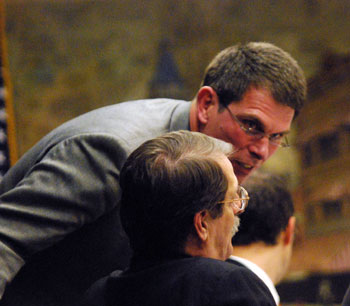
Standing is city administrator Steve Powers leaning over to chat with Jack Eaton (Ward 4) before the start of the Nov. 18 meeting.
Stephen Kunselman (Ward 3) stated that he supports pedestrian safety. He talked about the fact that there are no jaywalking laws. He also noted that it’s legal to ride a bike on a sidewalk, which he does because he feels safer there. “Cars are bigger than I am. Cars can kill me.” He said that maybe pedestrians have been “pampered” by the city making them think that cars will stop just by standing by the side of the road. He wanted people to understand that it’s dangerous out there, and to have a sense of risk. He wanted the task force to focus on that aspect of education – understanding the sense of risk. He’d support the task force.
Margie Teall (Ward 4) told Kunselman that it’s not true that he’s safer riding on the sidewalk.
Anglin echoed Eaton’s point about having the transportation safety committee handle the task. He wanted there to be a broader conversation with the schools and the University of Michigan.
Warpehoski responded to Anglin’s idea that the task force should cast a wide net by pointing out how the resolution names the various interested groups. He noted that the AAPS transportation safety committee does not have UM representation. He said he’s become something of an evangelist for the FHA manual on how to develop a pedestrian safety strategy. [.pdf of "How to Develop A Pedestrian Safety Action Plan"] He ticked through some examples from the manual. The task force would be an opportunity to step back from the controversy of the crosswalk ordinance, he said.
Warpehoski then proposed an amendment that the pedestrian task force make its recommendation for an ordinance change by the first meeting in October 2014. His plan was to put off the final vote on the crosswalk ordinance until after that. He said if councilmembers won’t support putting off the ordinance change when it comes before the council for a second reading, they shouldn’t vote for this amendment.
Outcome: The amendment accelerating the timeline for the task force’s report failed, getting support only from Warpehoski, Briere, Taylor, Teall, and Hieftje.
Kunselman said he wonders how the city will be working with UM, if the city’s crosswalk ordinance language is different from the university’s rule. Briere responded by saying that as long as Kunselman has announced how he’s going to vote on rescinding the ordinance and assuming everyone else on the council does the same, the city’s ordinance would be reverting to the UTC, which has the same language as the UM rule.
Jane Lumm (Ward 2) asked if the sponsors would be willing to put this off until some additional questions could be answered – noting that she didn’t disagree with the underlying premise of establishing the task force. Briere asked Craig Hupy, the city’s public services area administrator, to the podium to respond to Lumm’s concern about what the staff’s plan would be.
Hupy explained that staff has not figured out completely how to move this resolution along with the sidewalk gap process. Briere wanted to know how long it would take to pull together that information. Probably by the middle of December, answered Hupy. Briere asked if that would represent a conflict with the appointment schedule of the task force. Hupy told Briere that’s up to the council.
Briere said she was struggling to find a rational reason to postpone this. She didn’t want to put this on the back burner for another construction season. Hupy said he’s not sure that a postponement would have a dramatic negative impact. Briere cited the numerous emails that she’s received from people who don’t realize the city has a program for addressing sidewalk issues. Briere apologized for making Hupy sit through a speech from her.
Christopher Taylor (Ward 3) stated: “For reasons articulated by councilmember Briere, I support the resolution.” Warpehoski quizzed Hupy about the impact on staff work.
Kunselman said he’d be looking at installing a flashing beacon at Easy Street and Packard Road. He wondered if at budget time next year he’d be told he has to wait for the task force recommendation. Hupy said that he was at that moment “brain dead enough” due to the late hour [after 1 a.m.] that he wasn’t sure – but he thought that intersection is already under consideration for a flashing beacon. Kunselman recalled that there’d been rubber hoses out in the street doing traffic counts.
Sally Petersen (Ward 2) wanted to make sure there’s no moratorium on pedestrian infrastructure. Hupy assured her that won’t be the case.
Outcome: The council voted unanimously to adopt the resolution establishing a pedestrian safety task force.
DDA TIF, Governance
In front of the council for final approval at the Nov. 18 meeting was a change to the ordinance (Chapter 7) regulating the Ann Arbor Downtown Development Authority’s tax increment finance capture and its board governance.
The outcome of deliberations at the council’s Nov. 7 meeting was to table a version of the Chapter 7 changes that had been under consideration by the council since Feb. 19, 2013.
The council then gave initial approval on Nov. 7 to a different version of the Chapter 7 changes. Those recommendations came from a committee of DDA board members and city councilmembers that has met four times since Aug. 26, most recently on Oct. 30. That committee was established at the council’s July 1, 2013 meeting – after the first version achieved initial approval at the council’s April 1, 2013 meeting. Representing the council on the joint committee were Stephen Kunselman (Ward 3), Christopher Taylor (Ward 3), Jane Lumm (Ward 2) and Sally Petersen (Ward 2). Representing the DDA were Sandi Smith, Roger Hewitt, Bob Guenzel and Joan Lowenstein.
The committee’s version of the Chapter 7 ordinance change allows for several million dollars in additional TIF (tax increment finance) capture by the DDA, compared to the tabled version. The version in front of the council on Nov. 18 set a cap on DDA TIF revenue that does not apply at all until FY 2017 and will result in roughly $6.1 million of TIF revenue to the DDA that year. It will also mean an estimated return of $300,000 total to the other taxing jurisdictions.
That amount will be proportionally divided among the taxing jurisdictions, which together levy roughly 27.5 mills of taxes in the DDA district. Proportionally, that translates to: city of Ann Arbor (60%), Washtenaw County (21%), Washtenaw Community College (13%), and Ann Arbor District Library (6%).
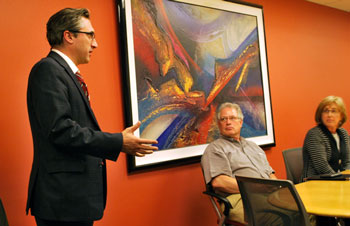
David Blanchard addressed a mid-October joint committee of DDA members and city councilmembers. As chair of the city’s housing and human services board, he advocated for a DDA commitment to affordable housing, which ultimately was included in the ordinance at $300,000 annually for residents at 50% AMI. At the council’s Nov. 18 meeting, Blanchard was nominated to be reappointed to that board. That nomination will be put to the council for a vote at its first meeting in December.
The $300,000 total to be divided by the other taxing jurisdictions in FY 2017 compares to roughly $2 million that would be divided among them under the tabled version of the Chapter 7 revision. The tabled version essentially clarified the enforcement of existing language in the ordinance. In both versions – assuming that new construction in the DDA district continues to take place at a healthy pace – taxing jurisdictions would continue to receive additional funds into the future after FY 2017.
The city’s share of the estimated $300,000 in excess TIF in FY 2017 will be about $180,000. But that will be distributed proportionally across the city’s funds based on the levy associated with the fund. For example, out of the $180,000, the general fund would get about $65,000. That compares to $430,000 that the city’s general fund would receive based on the tabled Chapter 7 approach.
On Nov. 7, after debating the issue, the council amended the committee’s recommended version to include a limitation on board terms. The version that was up for final consideration on Nov. 18 imposed a limit of three four-year terms, with additional terms possible only after a four-year lapse.
On Nov. 7, during deliberations, the council also added a requirement that the DDA budget at least $300,000 each year for affordable housing projects, with “affordable” defined as targeting residents with 50% area median income (AMI).
DDA TIF/Governance: Public Hearing
Nine people spoke at the Nov. 18 public hearing on this item. Thomas Partridge talked about how he went to Washington D.C. to study law and to work for senators McNamara and Hart. He called the ordinance a furtherance of corruption and discrimination. The entire DDA ordinance should be repealed and substituted, he said. The DDA needs enough revenue to give equal opportunity to every commercial area of the city, he said.

From left: Sabra Briere (Ward 1) and Maura Thomson, executive director of the Main Street Area Association.
Maura Thomson addressed the council as executive director of the Main Street Area Association, which represents 175 businesses. She supported the ordinance change. Councilmembers had wanted clarity, she said. The ordinance would not have negative impact on the work the DDA is doing now and could do in the future, she said. She challenged the idea of downtown interests “versus” the rest of the city, by saying the downtown belongs to everyone. The downtown has a social, economic, and cultural purpose, she said. Looking at the interests of the downtown and the rest of the city as separate is not a productive way to think about it, she said.
Tom Heywood of the State Street Area Association called the solution that had been crafted a win-win. It allowed the DDA to continue its work while returning millions of dollars to the brother and sister jurisdictions over several years, he said.
Jim Osborne asked for stricter council oversight of the DDA. Instead of begging the DDA money to give money back, the council should control the DDA, he said.
Sandi Smith, current chair of the DDA, read a prepared statement. She appealed to the idea that “a rising tide lifts all boats.” The premise of the ordinance change was to achieve clarity, she said, but she complained about the cap that was being proposed. She described the proposed ordinance as cutting the DDA’s bonding capacity in half. [That claim relies on a comparison that ignores the existing language in the ordinance. Compared to the existing language in the ordinance, the DDA's revenues will be about $2 million greater annually than they would be if the strict language of the ordinance were enforced. ]
Lou Glorie took the podium to counter Smith. She characterized the ordinance change as re-establishing some equity between the DDA and the other taxing authorities.
Omari Rush, education manager at the University Musical Society, described the role of downtowns in cities and how much he enjoys Ann Arbor’s downtown. He appreciated what’s been done to make Ann Arbor’s downtown clean, safe and vibrant.
Dug Song recalled that the last time he attended a council meeting, he was lobbying for a skatepark – and now that’s being built. He expressed general support for the DDA. He recalled how the local tech firm Arbor Networks grew from five people to 300 people, but most of those jobs were in Boston, because there’s not adequate space in downtown Ann Arbor. He supported the “love economy,” an allusion to remarks from Alan Haber made earlier in the meeting, but he also supported small companies (two people and some laptops) that grow into something larger.
Peter Baker introduced himself as a resident of Water Hill and employee of DuoSecurity. He chose Ann Arbor because of the interplay between downtown and neighborhoods.
DDA TIF/Governance: Council Deliberations
Stephen Kunselman (Ward 3) led of deliberations by saying he was really pleased that there was support for this, based on the public hearing commentary. The discussion had lasted for many months, he said. [The initial proposal this year dates back to February, but a budget amendment that was similar in spirit had been proposed by Kunselman in May 2012.] He urged the adoption of the ordinance without any amendments.
Sabra Briere (Ward 1) then announced that she’d just emailed other councilmembers a proposed amendment to the ordinance change. The amendment was the result of a housing and human services advisory board (HHSAB) resolution, she said. The amendment clarified that the first year of the $300,000 affordable housing allocations is tax year 2016. Thereafter the DDA is required to increase the allocation by the same amount that the cap escalates. Kunselman indicated he was fine with the amendment, if it was not considered a big enough change that it would reset the proposal to a first reading in front of the council.
Briere conferred with city attorney Stephen Postema and assistant city attorney Mary Fales on the question. Postema concluded: “It’s fine.” Kunselman noted that he’d touched base with David Blanchard, chair of HHSAB, and Kunselman thought it’s probably not an amendment that’s necessary, but he didn’t have a problem with it. He accepted it as a friendly amendment.
Margie Teall (Ward 4) was worried that the DDA would not be able to continue funding the nonprofit Dawn Farm, which does not have a 50% AMI requirement. [The ordinance revision specifies 50% AMI as the definition of affordable housing.] Executive director Susan Pollay indicated that she understood the ordinance language to mean that additional dollars, beyond the $300,000, could be allocated for Dawn Farm.
Jane Lumm (Ward 2) reported that she had attended the recent DDA partnerships committee meeting as well as the HHSAB meeting. She characterized the conversations at those different meetings as “schizophrenic.” The DDA had wanted more flexibility, she reported. DDA board chair Sandi Smith – who had taken the podium – responded to Lumm, saying there was not pushback on the $300,000 amount that the DDA had to allocate for affordable housing. Rather, it was the 50% AMI standard that was problematic, she said.
Lumm asked for an explanation of the DDA’s policy to invest in areas outside the DDA district when those investments were felt to have a positive impact on the district. The standard in the policy is within 1/4 mile of the district, Pollay said. Smith ventured that using the wording “downtown area” would be consistent with the DDA’s policy on investing in housing projects within 1/4 mile of the district. Briere came to the podium to show Smith her iPad with the text of her proposed amendment.
Mayor John Hieftje indicated that he had a concern about the city’s own budget. He believed there were going to be millions of dollars of investment required in the Ann Arbor housing commission properties. So he wanted the “downtown area” to stretch as far as Miller Manor, which is an AAHC property. Lumm wanted to add “near downtown area” to the ordinance language. Kunselman wanted to make sure that any change in the wording would not reset the ordinance to the first reading. Fales confirmed that such a change in wording would not reset the reading, because it’s consistent with the DDA renewal plan.
Briere got confirmation from Smith that the DDA’s definition of “near downtown area” means within 1/4 mile of the district boundary. Pollay and Briere weren’t sure if Miller Manor was within 1/4 miles of the district. [It is.] Christopher Taylor (Ward 3) wanted confirmation that Miller Manor meets the 50% AMI criterion.
Lumm recited the reasons she was supportive of the ordinance revision – which included the fact that there would be 55% growth in TIF for the DDA over the next three years. She thought it would have been better to impose the cap in an earlier year so that sharing of additional revenue with the other jurisdictions would have begun sooner.
Chuck Warpehoski (Ward 5) announced that he was going to violate the council’s rules by emailing the amendments to the media. [.pdf of Briere amendment]
Jack Eaton (Ward 4) said he would have preferred a lower cap and a shorter term limit for DDA board members. [The terms were limited to three 4-year terms in the ordinance revision.] However, Eaton applauded the effort of the committee that made the recommendation.
Taylor said he wouldn’t support the ordinance revision. The DDA had proven itself a reliable steward of taxpayer funding, he contended. He recited familiar arguments in support of the DDA. Taylor went on to claim that the resulting proposal before the council was not a compromise, but rather a “power play.” He contended that people had been told that if they organized and spoke against the revision, “there would be trouble.”
Sumi Kailasapathy (Ward 1) indicated she wasn’t happy with the ordinance revision [because the TIF revenue to the DDA was greater than she had wanted], but would still support it.
Margie Teall (Ward 4) stated she would not support the ordinance revision.
Hieftje recited some standard arguments and history of the DDA and its impact. Hieftje characterized the proposal as a compromise, disagreeing with Taylor. Hieftje wanted to “get this behind us” and let the DDA get back to work.
Teall contended that the proposal went way beyond clarifying the language and contended that Taylor was “calling it like it is.”
Outcome: The council voted to approve the ordinance change, with dissent from Taylor and Teall.
Council Organization
The council had a handful of items on its agenda at the start of the meeting associated with the new, post-election composition of the council. In Ward 4, Jack Eaton joined the council in the seat formerly held by Marcia Higgins.
Council Organization: Swearing In
Those taking the oath administered by city clerk Jackie Beaudry were: Sabra Briere (Ward 1); Jane Lumm (Ward 2); Stephen Kunselman (Ward 3); Jack Eaton (Ward 4); and Mike Anglin (Ward 5). The oath is from Section 2 of Article XVI of the Michigan state constitution: “I do solemnly swear (or affirm) that I will support the constitution of the United States and the constitution of this state, and that I will faithfully discharge the duties of the office of [city councilmember] according to the best of my ability.”
Council Organization: Mayor Pro Tem
Under the city charter, the council is required to “elect” a mayor pro tem at the first meeting after the seating of new councilmembers:
At its first meeting after the newly elected members have taken office following each regular city election, the Council shall elect one of its members Mayor Pro Tem for a term expiring at the first Council meeting following the next regular city election. The election of the Mayor Pro Tem shall be by the concurring vote of at least six members of the Council.
In the event that the mayor is temporarily not able to fulfill his duties, the mayor pro tem has all the powers of the mayor, save the power of veto. In Ann Arbor’s council-manager form of government, where the city administrator has day-to-day responsibility for city operations, those mayoral duties are somewhat limited and include: presiding over meetings of the council; voting as a councilmember; making nominations to committees, commissions and boards; and exercising certain powers during emergencies.
The procedure used by the council to “elect” a mayor pro tem is to move a resolution proposing that some particular councilmember serve as mayor pro tem. One possible reason for this procedure – as opposed to asking councilmembers on a roll call vote administered by the city clerk to name the person they’d like to serve – is the charter requirement that:
Except as otherwise provided in this charter, each member of the Council present shall cast a “yes” or “no” vote on each question before the Council, unless excused therefrom by a vote of at least six members.
However, it’s not clear that a charter requirement would prevent taking an informal straw poll at the council table, with the outcome of that straw poll determining the content of the resolution on which the council would then formally vote.
In any case, the council’s procedure is to begin with a motion to select someone as mayor pro tem, which on Nov. 18 was made by Christopher Taylor (Ward 3) – who’d been recognized by mayor John Hieftje – to name Margie Teall (Ward 4) to that position.
Taylor began by calling mayor pro tem an “honorary post.” He stated that it was his understanding that it was filled “on the basis of seniority.” [Marcia Higgins had most recently served as mayor pro tem, each year since 2008, and was for that period the most senior member on the council. However, prior to that, mayor pro tem was Chris Easthope, who was at that time not the most senior member of the council – as that distinction belonged to Higgins.] Taylor continued his remarks by quipping that while Teall is young at heart, she is old by measure of the length of her council service, so he supported her for mayor pro tem.
Stephen Kunselman (Ward 3) responded to Taylor’s remarks by saying he wouldn’t support Teall as mayor pro tem, saying that the council didn’t always need to do things the same way. He wanted to see fresh blood and fresh thinking at the position. He’d support Jane Lumm (Ward 2), Kunselman said.
Mayor John Hieftje contended that the position is honorary, and that it’s rare for someone to need to fill in. He gave the date of his last absence at a meeting as July 3, 2012.
Outcome: The council voted 6-5 to appoint Margie Teall as mayor pro tem for the coming year. Dissenting were Kunselman, Anglin, Eaton, Kailasapathy, and Lumm. After Hieftje and Teall, the order of succession first by seniority, then alphabetically would be: Mike Anglin, Sabra Briere, Christopher Taylor, Stephen Kunselman, Jane Lumm, Sally (Hart) Petersen, Sumi Kailasapathy, Chuck Warpehoski and Jack Eaton.
Council Organization: 2014 Council Committee Appointments
Mayor John Hieftje began by noting that when there’s a new member of the council, it’s been customary to delay voting on committee appointments until the following meeting, so that the appointments can all be sorted out. He invited a motion to postpone, which he received.
Mike Anglin (Ward 5) said it’s important for councilmembers to be able serve on those committees that they want to serve on. He went on to contend that the mayor pro tem has an obligation to work with councilmembers on appointments. He wanted that brought up before councilmembers are appointed to those committee members. He pointed out that the liquor license review committee’s responsibility has evolved over time. Anglin called for a slower and more deliberative process for the committee appointments.
Hieftje said the process over the last few years was that he’d worked with Marcia Higgins, in her capacity as mayor pro tem, to gather up preferences for assignments from councilmembers. Hieftje said he would be happy to see councilmembers get the assignments they wanted.
Margie Teall (Ward 4) noted that she would not be attending the next council meeting.
Outcome: The council voted to delay consideration of the council committee appointments until its first meeting in December – Dec. 2, 2013.
Council Organization: 2014 Council Rules
Christopher Taylor (Ward 3) suggested that in accordance with past practice, the item setting the council rules be delayed until the rules committee could have a chance to look at it. Sabra Briere (Ward 1) noted that the rules had just recently been amended. She also noted that it would be the existing rules committee that would do the review.
Chuck Warpehoski (Ward 5) asked for a future amendment to Rule 8, swapping in “personal attack” for “personality” as the thing to be avoided during council deliberations. [In an archaic meaning, "personality" can mean a disparaging remark about someone.]
Outcome: The council voted to delay action on the council rules until its first meeting in December so that the council’s rules committee could review the existing rules. The existing council rules committee now consists of Mayor John Hieftje, Stephen Kunselman (Ward 3), Christopher Taylor (Ward 3) and Sabra Briere (Ward 1)
Ethics Resolution
The council considered a resolution directing an educational effort on Public Act 317 of 1968, which is the state’s conflict-of-interest statute.
A final “resolved” clause directed the council’s rules committee to draft standards of conduct for local officials based on Public Act 196 of 1973, which applies to state employees of the executive branch and appointees of the governor. The point of PA 196 appears to be designed to prevent unauthorized leaks of information.
The resolution was first considered on Nov. 7, but its sponsor, Sally Petersen (Ward 2), moved immediately to postpone consideration of the resolution, due to the very heavy agenda that night. It was taken up again on Nov. 18.
Ethics: Public Commentary
Jeanine Delay offered her strong support for the ethics resolution that Petersen was sponsoring. Delay works with a group called A2 Ethics. She acknowledged Stephen Kunselman’s support of the resolution. There are many persistent misconceptions about local ethics, Delay said. One misconception is that upon election, an official will somehow magically recognize the various conflicts that might arise. The second misconception is that good character will ensure good ethical practice. “We’re all in this together, so we need a collective process,” she said. In passing this resolution, Ann Arbor would join other cities that have recognized the importance of ethics in civic life, she said.
Nancy Schewe of the local League of Women Voters also indicated support for the ethics resolution. Setting our own standards will allow us to reflect our own local values, she said. This resolution would help avoid problems before they come along. The standards should be known, codified and enforced, she said. She added that this would shape a community of high ethical standards.
Erin Mattimoe introduced herself as a youth developer and a volunteer with A2 Ethics. Democracy depends on trust in elected officials, she said. That requires regular training and education, she said.
Joanna DeCamp introduced herself as a volunteer with A2 Ethics. She supported the resolution on ethics sponsored by Petersen (and also Kunselman). Trust in government is low at the national and state levels, she said. Comprehensive training and education would allow common expectations of behavior to be developed, she said, and that will allow for constructive dialogues with conflicts arise.
Ethics: Council Deliberations
Sally Petersen (Ward 2) thanked A2 Ethics for their work, but cautioned that the resolution is not really about an ethics policy. This was a first step in the conversation, she said. Issues of conflict of interest are “top of mind” for the community, she said. She wanted everyone to be on an even playing field, and that’s why the resolution called for an educational effort.
Petersen responded to the question of what the problem is – by saying there doesn’t need to be a problem that needs solving in order to start working along these lines.
Sabra Briere (Ward 1) said she was the one who’d asked what the problem was to be solved. Briere said there’s a “perception” that there might be conflict of interest and there could be a need to address that. She was not comfortable with trying to apply PA 196 because it doesn’t get at the issue of undue influence.
Jack Eaton (Ward 4) said he’s an enthusiastic supporter of exploring this issue, saying he thought standards should be established so that councilmembers have a clear measure by which to guide their conduct. Like Briere, he was concerned about inclusion of Act 196 because it deals with premature disclosure of information.
Chuck Warpehoski (Ward 5) then proposed amending the resolution by naming Act 196 just as an example of a resource that can be drawn upon, among others. That was considered friendly by Petersen. [.pdf of Warpehoski's ethics amendments]
Margie Teall (Ward 4) said she thought the resolution was a good idea, but had concerns about the practical implementation. She wondered how much burden that would be on the city attorney’s staff. City attorney Stephen Postema characterized it as just another assignment.
Jane Lumm (Ward 2) indicated support for the resolution. It’s important that people have confidence in their elected officials, she said.
Kunselman thanked Petersen for her work. He asked if anyone wanted to trade positions with him on the rules committee – as he’s currently on that committee. It’s all about learning, he said.
Outcome: The council voted unanimously to approve the ethics resolution.
Public Park Use Fee Waiver
The council gave final consideration to a change to the city’s ordinances so that charitable distribution of goods for basic human needs – such as food – could be conducted in city parks without incurring a fee for park use. The proposal is not restricted to downtown parks, but the idea originated from an issue that emerged in connection with Liberty Plaza, a downtown park. Volunteers with the Vineyard Church were distributing pizza in Liberty Plaza through its weekly Pizza in the Park program.
The building adjacent to Liberty Plaza on the west is owned by First Martin. Church volunteers were using the private parking lot to the rear of the building as a drop off for the Pizza in the Park event, and the area under the building overhang as an area for gathering and for dispensing food. Earlier this year, that had prompted the city to contemplate assessing the fee for public park usage.
By way of additional background, at the Oct. 10, 2011 Ann Arbor Downtown Development Authority board meeting, John Teeter of First Martin had described for the DDA board the regular cleanup activities First Martin undertakes in public parks, including Wheeler Park, the corner of Main and Depot streets, and Liberty Plaza. In a more recent telephone interview with Teeter, he said that the park maintenance work had been done for a few years prior to 2011 and continues to the present. First Martin maintains Liberty Plaza through regular trash pickup, and certain improvements – most recently to the irrigation system and through contributions to a new “sensory garden.”
The recommendation for the ordinance change came from the city’s park advisory commission at its Sept. 17, 2013 meeting. This broader policy change comes three months after the Ann Arbor city council waived all rental fees for the use of Liberty Plaza during a one-year trial period, based on a PAC recommendation. That city council action came at its July 15, 2013 meeting.
The Liberty Plaza fee waiver was approved in response to the Pizza in the Park situation. The proposal recommended by PAC on Sept. 17, and on the council’s Nov. 18 agenda, amended Chapter 39, Section 3:6 of the city code. [.pdf of revised ordinance language]
The ordinance change provides a permanent fee waiver for this specific purpose – the charitable distribution of goods for basic human needs – but it would still require that organizations get a permit to use the park, and follow permitting procedures, including clean-up obligations.
The council gave initial approval to the ordinance change at its Nov. 7 meeting. All changes to city ordinances require an initial approval, followed by a final vote at a subsequent meeting. That’s why it appeared on the council’s Nov. 18 agenda.
Public Park Use Fee Waiver: Public Hearing
Thomas Partridge addressed the council about the use of parks for people to gather. He said issues of free speech are being ignored in the ordinance change, so he wanted the change delayed for further review.
Seth Best asked everyone to stand who supported the ordinance change. There were about 70 people standing in chambers in response. He read off a list of people that he wanted to thank. Dan Reim, minister for hispanic/latino ministry and social justice at St. Mary’s student parish, supported the ordinance change in part by recounting the parable of the good Samaritan.
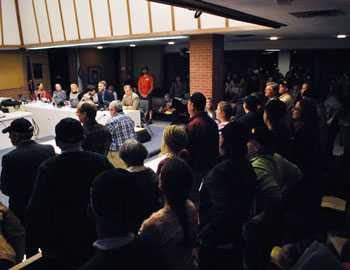
When Seth Best invited people to stand in support of the ordinance change, roughly 70 people, by The Chronicle’s count, were standing in city council chambers.
Rev. Lindsay Conrad of First Presbyterian Church also addressed the council supporting the ordinance change. Jim Osborne urged passage of the resolution. Osborne told the council that he’d organized a group to distribute food at West Park and he’s found the city’s fees and process to be a burden.
Lily Au said that the Delonis Center homeless shelter in Ann Arbor has not increased its capacity. She asked the council to help poor people. Odile Hugot Haber spoke in support of the ordinance change. Alan Haber also rose to speak in favor of the ordinance change. It’s obvious that a church should be able to distribute free food in a park, Haber said. There’s an economy of love, he said: making available what we have with each other.
Michael Brinkman introduced himself as a resident next to Wheeler Park. Severe weather in the Philippines and in the Midwest had resulted in new homeless people, he said. He asked the council to support the microcosm of that larger context. Three others rounded out the public hearing, all in support of the ordinance change.
Public Park Use Fee Waiver: Council Deliberations
Jack Eaton (Ward 4) suggested a “friendly” amendment to add “and/or services” in addition to “goods.” Christopher Taylor (Ward 3) replied that the distinction between goods and services was material to PAC’s review of the proposal. Adding services would expand what was contemplated, Taylor said. Taylor recited the history of that issue. PAC had “interrogated” the proposal thoroughly, Taylor said.
Margie Teall (Ward 4) thanked the members of Camp Take Notice and everyone who’d met with her about the issue. She said it was enjoyable to be able to respond to a request like this.
Chuck Warpehoski (Ward 5) called the solution of the ordinance change very “elegant.” Mike Anglin (Ward 5) praised Camp Take Notice members for being very good at political action. It was hard to deny their humanitarian message, he said.
Sally Petersen (Ward 2) offered her thanks. Jane Lumm (Ward 2) said Camp Take Notice members “know how to catch bees with honey.”
Outcome: The council voted unanimously to approve the possible park fee waiver. The vote received applause.
Non-Motorized Plan
In front of the council for the second time was the adoption of an update to the city’s non-motorized transportation plan. A postponement on Nov. 7 came in deference to a request from Jane Lumm (Ward 2), who indicated she had not had an opportunity to read it through as closely as she wanted.
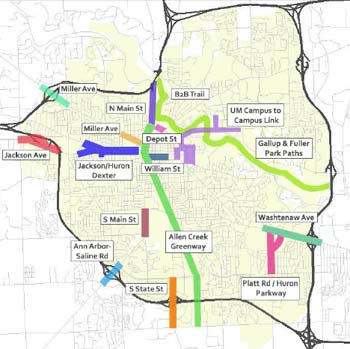
Map identifying geographic areas for improvements for pedestrians and bicyclists, as noted in the 2013 non-motorized transportation plan update.
The city’s non-motorized transportation plan is part of the city’s master plan. The planning commission adopted the updated plan at its Sept. 10, 2013 meeting. [.pdf of draft 2013 non-motorized transportation plan update] With respect to the adoption of the master plan, the council and the planning commission are on equal footing. That is, they must adopt the same plan. So in this case, the commission is not merely the recommending body.
The update is an amendment to the main non-motorized transportation plan, which was adopted in 2007. The new document is organized into three sections: (1) planning and policy updates; (2) updates to near-term recommendations; and (3) long-term recommendations.
Examples of planning and policy issues include design guidelines, recommendations for approaches like bike boulevards and bike share programs, and planning practices that cover education campaigns, maintenance, crosswalks and other non-motorized elements for pedestrians and bicyclists.
For example, the update recommends that the city begin developing a planning process for bike boulevards, which are described as “a low-traffic, low-speed road where bicycle interests are prioritized.” Sections of West Washington (from Revena to First), Elmwood (from Platt to Canterbury) and Broadway (from its southern intersection with Plymouth to where it rejoins Plymouth about a mile to the northeast) are suggested for potential bike boulevards.
Near-term recommendations include lower-cost efforts like re-striping roads to install bike lanes and adding crossing islands. Longer-term projects that were included in the 2007 plan are re-emphasized: the Allen Creek Greenway, Border-to-Border Trail, Gallup Park & Fuller Road paths, and a Briarwood-Pittsfield pedestrian bridge.
Non-Motorized Plan: Council Deliberations
Jane Lumm (Ward 2) led off by asking city planning manager Wendy Rampson, city transportation program manager Eli Cooper and public services area administrator Craig Hupy to the podium to answer questions. She asked about bike boulevards. She wanted to an amendment to the plan to include a statement that any bike boulevard implementation plan would need to engage the neighborhood.
Rampson pointed out that an amendment by the council would require the planning commission to reconsider the plan, because the council and the commission need to adopt the same plan.
Sabra Briere (Ward 1) asked Hupy to explain how the community engagement typically happens. If a bike boulevard were proposed, Briere ventured that the staff would have public engagement without any particular direction from the council. Hupy confirmed Briere’s understanding.
Lumm said her concern is that when you adopt a plan, the plan then gets implemented. Lumm thanked staff for answering her questions and all the work that went into developing the plan. Hearing it would have to go back to planning commission gave her pause. Chuck Warpehoski (Ward 5) quoted out the section in the plan on bike boulevards and how the staff is supposed to engage the public. He also pointed out that the recommendations are in every case tentative. He didn’t see the need to amend the plan.
Jack Eaton (Ward 4) pointed to page 39 of the plan, which includes locations for additional rapid flashing beacons. Eaton asked what the implementation process would be. Cooper explained a process that starts with data collection. Council involvement would take place when the money was needed, Cooper said.
Mayor John Hieftje asked Cooper to sketch out the process for developing the non-motorized plan update. Mike Anglin (Ward 5) wanted clarification of the reason why the planning commission would also need to approve any amendment.
Outcome: The council voted unanimously to adopt the update to the non-motorized transportation plan.
New Year’s Events
As part of its consent agenda, the council considered two resolutions authorizing the closing of streets in connection with New Year’s celebrations – on New Year’s Eve for the Puck Drops Here, and on New Year’s Day for the NHL’s Winter Classic Hockey Game at Michigan Stadium.
The council considered authorization of the closing of public streets in connection with those New Year’s festivities.
New Year’s Events: Puck Drop
In connection with the NHL Winter Classic Game to be played on New Year’s Day, the Ann Arbor Area Convention and Visitors Bureau is hosting a New Year’s Eve event called The Puck Drops Here, which will mimic the dropping of the lighted ball in Times Square, but with a 6-foot diameter lighted “puck” that is being fabricated by METAL.
The name of the event is a play on words. In the game of ice hockey, the start of action is marked with an official dropping of the puck between two opposing players – the puck drop. It’s similar to the tip-off in basketball. The name of the event also plays on the expression popularized by U.S. President Harry Truman: “The buck stops here.”
The requested action from the council includes street closures downtown along Main Street all day on New Year’s Eve.
Specifically, the council will be asked to authorize street closures from 8 a.m. on Tuesday, Dec. 31, 2013 to 6 a.m. on Wednesday, Jan. 1, 2014. The actual event runs from 8 p.m. until 12:30 a.m.
Streets to be closed include:
- S. Main from E. William to Huron
- Liberty Street for a block on either side of Main (from S. Ashley to Fourth Avenue)
- Washington Street for a block on either side of Main (from S. Ashley to Fourth Avenue)
Musical entertainment will feature Michelle Chamuel, who placed second in the most recent edition of the TV vocal competition “The Voice.” She lived in Ann Arbor for a time earlier in her musical career.
New Year’s Events: NHL Winter Classic
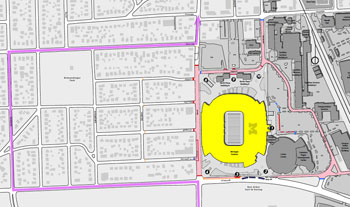
UM football game day street closures (pink) with detour route (purple). These same street closures will be in effect on Jan. 1 for the NHL Winter Classic.
The Winter Classic is an NHL hockey game between the Detroit Red Wings and the Toronto Maple Leafs scheduled for Wednesday, Jan. 1, 2014. The game will be played outdoors at the University of Michigan football stadium. Game start time is currently listed on the Ann Arbor Area Convention and Visitors Bureau as 1 p.m. The back-up date, in case of inclement weather, is Jan. 2.
The resolution that the Ann Arbor city council considered on Nov. 18 will implement many of the conditions that apply during University of Michigan home football games. For example, the newly implemented street closures for home football games will also be authorized for the Winter Classic:
- E. Keech Street between S. Main and Greene streets, limiting access to parking permit holders on Greene Street from E. Hoover to Keech streets
- The westbound right turn lane on E. Stadium Boulevard (onto S. Main Street) just south of the Michigan Stadium
- S. Main Street closed to both local and through traffic from Stadium Boulevard to Pauline
Those closures will be effective three hours before the game and last until the end of the game – with the exception of southbound S. Main Street, which will be closed beginning one hour before the game until the end of the game.
The council also was asked to invalidate peddler/solicitor permits and sidewalk occupancy permits in the following areas:
- S. State Street from E. Hoover Street to the Ann Arbor Railroad tracks
- Along the Ann Arbor Railroad tracks from S. State Street to the viaduct on W. Stadium Boulevard
- W. Stadium Boulevard from the viaduct to S. Main Street
- S. Main Street from W. Stadium Boulevard to Hill Street
- Hill Street from S. Main Street to S. Division Street
- S. Division Street from Hill Street to E. Hoover Street
- E. Hoover Street from S. Division Street to S. State Street
- S. Main Street from Scio Church Road to W. Stadium Boulevard
- W. Stadium Boulevard from S. Main Street to Prescott Avenue
The council was also asked to authorize a special temporary outdoor sales area so that the owners of commercially and office-zoned property fronting on the following streets could use their private yard areas for outdoor sales and display:
- West side of S. Main Street between Stadium Blvd. and Hoover Street
- East side of S. Main Street from 1011 S. Main to Hoover Street
- North side of Hoover Street between S. Main and S. State streets
- North side of W. Stadium Blvd. between S. Main and S. State streets
In addition, the council was asked to designate the Winter Classic game as a date on which the usual front open space parking prohibition does not apply. So residents who customarily offer their lawns for home football game parking will be able to do so for the Winter Classic as well.
At the most recent meeting of the Ann Arbor Downtown Development Authority board, executive director Susan Pollay described for the board how the DDA plans to charge public parking on New Year’s Day – a time when parking would ordinarily be free. That would allow the DDA to take reservations in advance, using the same strategy it uses for art fairs parking in the summer.
The Ann Arbor DDA manages the city’s public parking system under contract with the city, and has the ability to set rates under that contract. There’s a clause in the contract that requires public notice and input for long-term rate increases, but not for one-off changes.
Outcome: The resolutions in connection with The Puck Drops Here and NHL’s Winter Classic Hockey Game at Michigan Stadium passed unanimously as part of the council’s consent agenda.
3325 Packard Rezoning
The council was asked to give initial approval of a request that would rezone 0.27 acres from R1C (single-family zoning district) to R2A (two-family zoning district) at 3325 Packard Road. This would allow the construction of a duplex on the now-vacant property. The owner contends that constructing a duplex is economically viable but a single-family home is not. The planning commission recommended denial of the rezoning request at its Aug. 7, 2013 meeting.
Sabra Briere (Ward 1), who is the city council’s representative to the planning commission, reviewed the planning commission’s reasoning in recommending against the rezoning.
Jane Lumm (Ward 2) asked for planning manager Wendy Rampson to come to the podium to comment. The planning commission had struggled with the decision, because it’s a vacant lot, Rampson told Lumm. In addition, it’s a corner lot. It’s an established single-family neighborhood, she noted, and the planning commission is always hesitant to approve a “spot zoning.” The owner hasn’t been able to garner support from an entire blockface of owners who would join in a request, Rampson reported.
Stephen Kunselman (Ward 3) praised the planning commission for following the master plan. He talked about the difficulty of redeveloping vacant lots in the eastern part of the city. Mayor John Hieftje said that he understood the planning commission’s decision.
Outcome: The council voted unanimously to reject initial approval of the Packard Road rezoning request.
Communications and Comment
Every city council agenda contains multiple slots for city councilmembers and the city administrator to give updates or make announcements about important issues that are coming before the city council. And every meeting typically includes public commentary on subjects not necessarily on the agenda.
Comm/Comm: Streetlights
During communications time, Stephen Kunselman (Ward 3) noted that some streetlights he’d complained about being out on Packard were now on – near Mary Beth Doyle park. Kunselman said that there’s no moratorium on streetlights and stated that there was only a budget resolution in the past, which he didn’t consider a moratorium.
Comm/Comm: Financial Disclosures
During public commentary at the conclusion of the meeting, Kai Petainen addressed the council about the issue of getting financial records from nonprofits. Petainen had a few days earlier posted a piece on his Forbes blog about an episode that involved Ann Arbor SPARK. Petainen’s remarks to council came at nearly 2 a.m., and he told Jack Eaton (Ward 4) that the meeting’s late hour was Eaton’s “initiation.” [It was the first meeting for Eaton after being elected to the council on Nov. 5.]
Comm/Comm: John F. Kennedy
During public commentary at the start of the meeting, Thomas Partridge introduced himself as a recent write-in candidate for Ward 5 city council, as well as a candidate for the state house and senate. He was there to call for honoring the legacy of John F. Kennedy on the 50th anniversary of his death. Partridge called on the public to urge the council, the county board, the state legislature and the Congress to put forward Kennedy’s 1961 agenda. Partridge called for affordable housing, transportation and health care, as well as education.
Comm/Comm: Transgender Day of Remembrance
During public commentary at the end of the meeting, Seth Best called the council’s attention to the fact that the transgender day of remembrance was Nov. 20.
Present: Jane Lumm, Mike Anglin, Margie Teall, Sabra Briere, Sumi Kailasapathy, Sally Petersen, Stephen Kunselman, Jack Eaton, John Hieftje, Christopher Taylor, Chuck Warpehoski.
Next council meeting: Dec. 2, 2013 at 7 p.m. in the second floor council chambers at city hall, 301 E. Huron. [Check Chronicle event listing to confirm date]
The Chronicle could not survive without regular voluntary subscriptions to support our coverage of public bodies like the Ann Arbor city council. We sit on the hard bench so that you don’t have to. Click this link for details: Subscribe to The Chronicle. And if you’re already supporting us, please encourage your friends, neighbors and colleagues to help support The Chronicle, too!




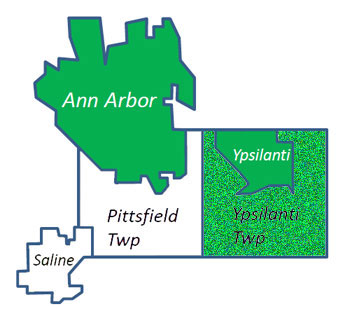
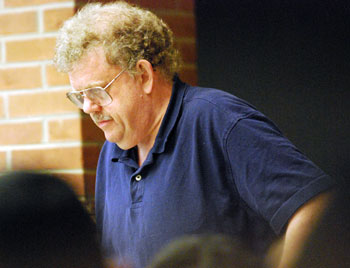
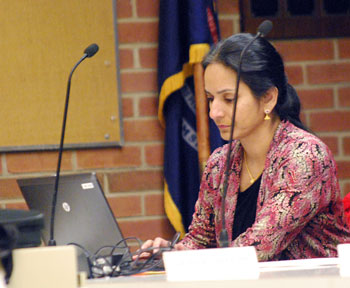
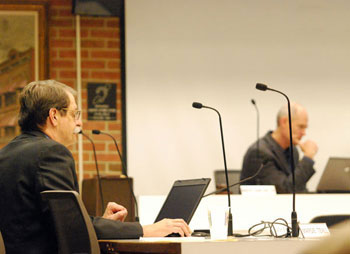
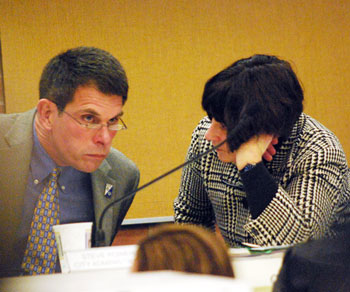
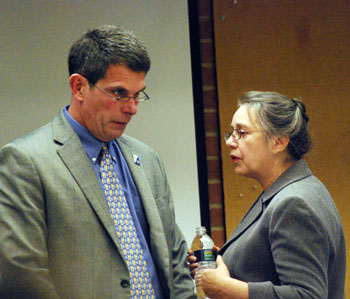
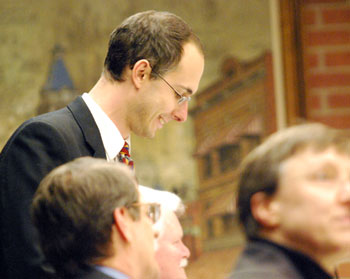
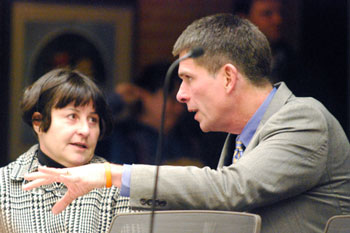
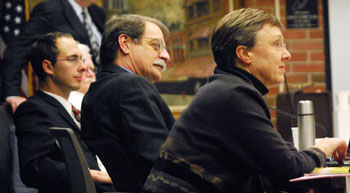
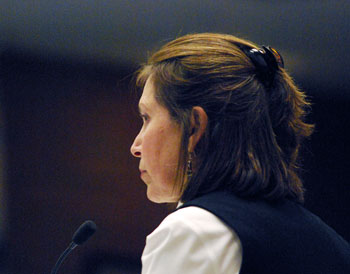
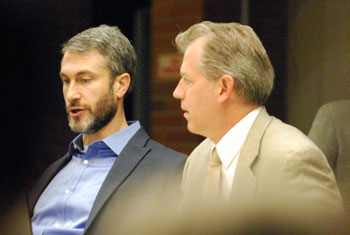
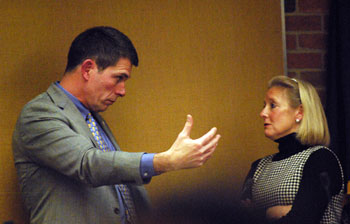
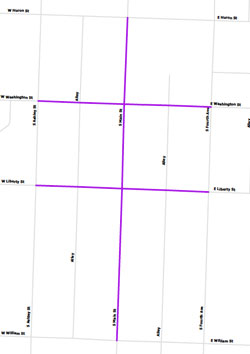
Dave, your bias is showing. You lose credibility when you insert editorial commentary in a piece like this. If you had labeled it as a column, I could let it pass, but you didn’t. You also lose credibility when you disagree with an idea so vehemently that you cannot let an opportunity go by to correct another person’s testimony. I would like to note that you also missed reporting the rest of the content of my statement, which contained facts about TIF that continue to get misstated, even by well informed people.
Sandi,
I don’t have any worries about my own credibility, or the credibility of this publication. If there’s a line you feel merits the description “editorial commentary” then you should provide that specific part of the report in your comment.
I read the part about Sandi’s commentary. She evidently had a long technical section about TIF in her comments. My advice to commenters who have that level of detail is to provide an electronic or at least printed copy of the comments to the press.
In this case, Dave pointed out a conflict between her comments and the language of the ordinance. It would be easier for the audience to judge if her full explanation were available.
I think that people often misunderstand the function of the journalist. As much as we enjoy the Chronicle’s devotion to a full reporting of what happened at a meeting, we also rely on a certain level of analysis and interpretation from them. It is not “opinion” to give some perspective. Dave is very good about going back to check on the substance of statements to give more background and information for the independent judgment of the reader.
“Sandi Smith… She described the proposed ordinance as cutting the DDA’s bonding capacity in half. [That claim relies on a comparison that ignores the existing language in the ordinance. Compared to the existing language in the ordinance, the DDA's revenues will be about $2 million greater annually than they would be if the strict language of the ordinance were enforced. ]”
The section within the brackets is editorial. We obviously have a different point of view. You chose to insert your point of view within my statement. I take exception to that.
Re: #3. I had 50 copies of both my prepared statement and documentation which I passed out before, during and after my commentary.
I see absolutely nothing wrong with editorial asides in an article like this. Reports who are just stenographers for whoever they are quoting do not help readers understand all the issues involved in whatever topic they are covering. I appreciate Dave’s clarification.
Sandi, is your statement online anywhere? If so, adding a link to it here would make it possible to evaluate it on its own merits.
This is an interesting problem. Because the reporters I’ve known (4 in my own family) felt so strongly about objectivity, I tend to side with Sandi Smith here. I’m very sensitive when I think reporters have “crossed the line.” Maybe too sensitive. Especially now that blogs have changed the way we gather information, and online “papers” such as mlive have paid reporters giving opinions in the comment sections. The new world of journalism can be confusing for someone conditioned to looking for “just the facts.”
Sandi, would you clarify for us how your perspective differs beyond the obvious aspect that Dave noted in his editorial comment? (Yes, it was an editorial comment. That much was clear.)
Sandi Smith writes: “The section within the brackets is editorial.”
The section within square brackets is factually accurate and – by any rational, objective standard – provides important missing context that your remarks at the podium omitted (an omission that worked to the detriment of a naive reader’s fair understanding of the issue). Inclusion of such bracketed material is standard practice here at The Chronicle, as regular readers will be aware.
Sandi Smith writes: “I had 50 copies of both my prepared statement and documentation which I passed out before, during and after my commentary.”
Next time, try including the locally-owned press in your handing-out activity. Or try email. If your complaint is that an important part of your statement was elided in the report, then an easy way to include it would be to paste the text into the comment box.
Re: #7: “The new world of journalism can be confusing for someone conditioned to looking for ‘just the facts.’”
If someone asserts that something is factual when it is not, the reporter knows it is not, the reporter has an obligation to their readers to point that out. “Objectivity” does not serve a journal’s audience if it means mere stenography.
In comment #4, Sandi Smith said:
“The section within the brackets is editorial. We obviously have a different point of view. You chose to insert your point of view within my statement. I take exception to that.”
I understood that comment to mean that she thought you should have closed the quote of her statement before you started the bracketed comment. If that is what she meant, I agree. It would help separate her statement from your comment.
If she meant that you should not have included your bracketed statement in the article at all, then I disagree. Good journalism includes healthy fact checking.
“… she thought you should have closed the quote of her statement before you started the bracketed comment.”
The section immediately preceding the bracketed comment is not a direct quote, so doesn’t include quotation marks. So I’m not sure what you mean by closing the quote – unless you mean that the bracketed quote could have started its own paragraph.
Isn’t it a great comment about the readership of the Chronicle that it comes down to typographical details?
My earlier comment was meant to suggest that sending an electronic copy of a comment to the press is useful to keep such things a matter of public record. I have done this several times, or transmitted a copy later to be included in a comment. It’s good to have all the information before the public when evaluating these issues.
@9 If a politician is complaining about new coverage, it means a journalist is doing something right. Thank you.
*news
I was confused by the quotation marks thing too, and thought exactly what Jack thought, until I realized that they represented Sandi quoting the article and not the article quoting Sandi.